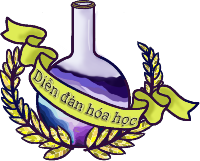Cho 12 gam hỗn hợp A gồm Fe và kim loại M (hoá trị II không đổi) vào dung dịch HCl dư thu được 2,24 lít khí [imath]H_2[/imath] (đktc). Mặt khác khi cho 12 gam hỗn hợp A ở trên tác dụng hết với khí [imath]Cl_2[/imath] ở nhiệt độ cao thì thấy lượng [imath]Cl_2[/imath] phản ứng tối đa là 5,6 lít (đktc). Biết rằng các phản ứng xảy ra hoàn toàn. Xác định kim loại M.
Mới nhất
Chủ đề mới
Tài nguyên mới
Trả lời nhiều
Tương tác nhiều
Xem nhiều
-
Chủ đềDiễn đànTrả lờiLượt xemThời gianTrả lời cuối cùng
-
Thông báo Nghỉ bồi dưỡng (Lớp 9)Thảo luậnThông báo048
-
Thảo luậnSự kiện070
-
Thảo luậnSự kiện080
-
Thảo luậnBlog - Quan điểm0109
-
Thông báo Về việc xác định tài khoảnThảo luậnThông báo10497
-
Thảo luậnBlog - Quan điểm21.8K
-
Thảo luậnMáy tính0123
-
Thảo luậnMáy tính099
-
Thảo luậnĐiện thoại0122
-
Thảo luậnThông báo0235
-
-
-
-
-
-
BD Hóa 8 Bài tập Hóa 8 ngày 07.09.21 (trước 15 h chiều nay)
- Thread starter Master
- Ngày bắt đầu
- Trả lời 10
- Xem 2K










